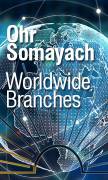Zevachim 79 - 85
The Mystery of the Ram’s Horn
“The horns of the animal are also offered on the altar when they are still connected to the animal.”
This halacha is taught in the mishna on our daf,and refers to parts of the animal that are fit to burn on the altar in the case of an olah sacrifice, which is meant to be completely burned. The mishna cites the source for this halacha to also burn these particular parts as the words in a verse in Vayikra 1:9: “The kohen will cause all of the animal to go up in smoke on the altar, as a burnt offering.”
Rashi, in his commentary to a different verse in Chumash (Shemot 19:13), cites a midrash (Pirkei d’Rabbi Eliezer 31) which reveals the identity of the horn that
Based on this, a famous question is asked by the commentaries. The Ramban asks how was there a horn from that ram for
The Ohr Hachaim Hakadosh (Rabbi Chaim Ibn Attar, 1696-1743, Moroco) offers three other possible answers to this apparent paradox that the Ramban addresses. Actually, the Ohr Hachaim Hakadosh poses the question in a slightly different manner: Why didn’t Avraham offer and burn the horn of the ram from the akeida, as we learn to be the halachic requirement from our mishna in masechet Zevachim? He offers three possible resolutions.
One is that Avraham did, in fact, put the horned-head of the ram on the altar to burn, in accordance with the halacha taught in our mishna, but that it fell from the altar. It is taught in a later mishna (86a) that if it should fall from the altar, it is not returned to there. (It is not evident why it would fall, and whether it fell with the head, or perhaps after it separated from the head due to the fire.)
In a second answer the Ohr Hachaim Hakadosh also posits that Avraham placed the ram’s head with the horns on the altar, but that the horns became detached before the blood was sprinkled on the altar. In this case, the horns would not be placed on the altar as part of the offering, and it would even be permitted to derive benefit from them, such as using them for knife handles (as in the gemara on 86a).
The Ohr Hachaim Hakadosh suggests, in his third answer, that Avrahham did not offer the horns on the altar, because it occurred at a time before the Torah was given. Although, he explains, we are taught that Avraham Avinu fulfilled all of the mitzvot even before they were commanded at Mount Sinai — and even before the rabbinical decree of eruv tavshilin (Yoma 28b) — there were exceptions to the rule before the actual giving of the Torah if there was an extraordinary need. Examples of these exceptions are the relationship between Yehuda and Tamar, and Yaakov marrying two sisters, Rachel and Leah. In the case of the ram’s horn, maintaining its existence would serve as a sign to inform future generations of the miracle of the akeida of Yitzchak. The ram’s horn was therefore intact at Mount Sinai.
The right horn will be blown at the future ingathering of the exiles as written, “On that day a great shofar shall be sounded, and those lost in the land of Assyria, and those exiled in the land of Egypt, shall come and they shall prostrate themselves before the
- Zevachim 85b






